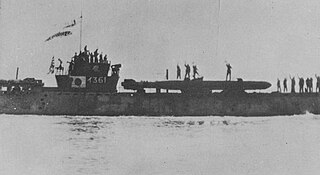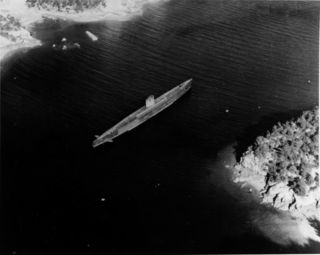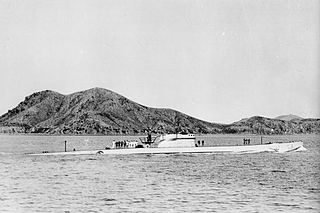 W
WThe I-361 class submarine , also called Type-D submarine or Sen'yu/Sen'yu-Dai type submarine was a type of the 1st class submarine in the Imperial Japanese Navy serving during the Second World War. The type name, was shortened to Yusō Sensuikan Ō-gata .
 W
WThe Ha-1-class submarine was an early class of submarines of the Imperial Japanese Navy, and were essentially British C-class submarines, which had been imported for evaluation and reverse engineering.
 W
WThe Ha-3-class submarine was an early class of submarines of the Imperial Japanese Navy.
 W
WThe Ha-7-class submarine was an early class of submarines of the Imperial Japanese Navy. It was also called the "Vickers C-3 class".
 W
WThe Ha-101 class submarine was a transport submarine built for the Imperial Japanese Navy (IJN) during World War II. The IJN planned to build 12 boats, but only 10 vessels were completed by the end of the war. The IJN called these submarines Sen'yu-Shō type submarine . The type name, was shortened to Yusō Sensuikan Ko-gata .
 W
WThe Ha-201-class submarine were a class of small submarines designed for the Imperial Japanese Navy (IJN). They were first deployed in 1945, but never saw combat. The Ha-201's were designed from the outset to have high underwater speed and were based on the earlier Submarine No.71 prototype. The official designation of the submarine was Sentaka-Shō type submarine . The type name, was shortened to Suichū Kōsoku Sensuikan Ko-gata .
 W
WThe I-121-class submarine was a class of minelayer submarine in the Imperial Japanese Navy (IJN), serving from the 1920s to the World War ii. The IJN classed it as a Kiraisen type submarine . The type name, was shortened from Kirai Fusetsu Sensuikan .
 W
WThe I-201-class submarines were submarines of the Imperial Japanese Navy during World War II. These submarines were of advanced design, built for high underwater speed, and were known as Sentaka-Dai type submarine or Sentaka type submarine . The type name, was shortened to Suichū Kōsoku Sensuikan Ō-gata .
 W
WThe I-351-class submarine was a class of tanker/transport submarines built for the Imperial Japanese Navy (IJN) during World War II. The IJN called this type of submarine Senho type submarine . The type name, was shortened to Hokyū Sensuikan . The IJN designed these submarines to support flying boats in forward areas. By the time the first submarine was finished, this capability was no longer needed and she was converted into an oil tanker. That boat, I-351, was sunk on the return leg of her second voyage in 1945; the second boat was destroyed by an American air raid before she was completed. Four additional submarines were planned, but were cancelled before they were laid down.
 W
WThe I-400-class submarine Imperial Japanese Navy (IJN) submarines were the largest submarines of World War II and remained the largest ever built until the construction of nuclear ballistic missile submarines in the 1960s. The IJN called this type of submarine Sentoku type submarine . The type name was shortened to Toku-gata Sensuikan . They were submarine aircraft carriers able to carry three Aichi M6A Seiran aircraft underwater to their destinations. They were designed to surface, launch their planes, then quickly dive again before they were discovered. They also carried torpedoes for close-range combat.
 W
WComandante Cappellini was a World War II Italian Marcello-class submarine built for the Italian Royal Navy. After Italy's surrender, the submarine was captured by the Japanese and handed over to Germany as UIT-24. Following the capitulation of Germany, the Japanese integrated the boat into their fleet as I-503. Following the end of the war, the United States scuttled the submarine in 1946.
 W
WThe No.6-class submarine was the first class of submarines of the Imperial Japanese Navy built domestically in Japan. Consisting of two vessels, these submarines were highly modified versions of Holland-class vessels designed in the United States.
 W
WSM U-55 was one of the six Type U-51 U-boats of the Imperial German Navy during the First World War.
 W
WThe Ro-100-class submarine was a group of medium-sized coastal submarines built for the Imperial Japanese Navy (IJN) during World War II. The IJN official designation for this class was Ko Type submarine or Senshō Type submarine . The type name, was shortened to Sensuikan Ko-gata .
 W
WSubmarine No.71 was an experimental high-speed submarine built for the Japanese Imperial Navy (IJN) during the 1930s.
 W
WThe No.1-class submarine was the first class submarines of the Imperial Japanese Navy. Consisting of five vessels, these submarines were modified Holland-class vessels built in the United States.